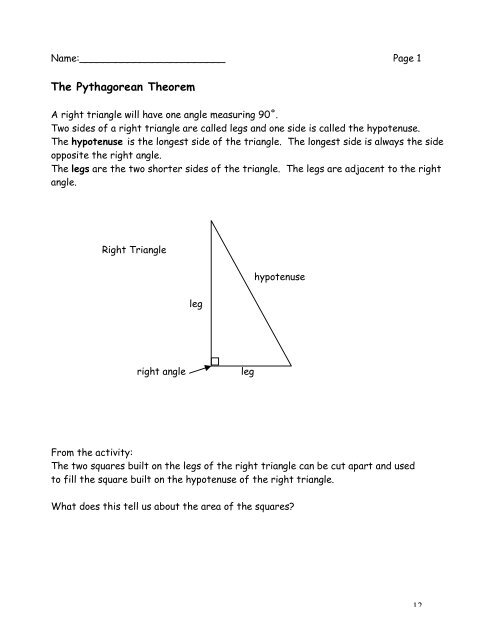Pythagorean Theorem Differentiated Instruction for Use in an ...
Pythagorean Theorem Differentiated Instruction for Use in an ...
Pythagorean Theorem Differentiated Instruction for Use in an ...
You also want an ePaper? Increase the reach of your titles
YUMPU automatically turns print PDFs into web optimized ePapers that Google loves.
Name:________________________ Page 1<br />
The <strong>Pythagore<strong>an</strong></strong> <strong>Theorem</strong><br />
A right tri<strong>an</strong>gle will have one <strong>an</strong>gle measur<strong>in</strong>g 90˚.<br />
Two sides of a right tri<strong>an</strong>gle are called legs <strong>an</strong>d one side is called the hypotenuse.<br />
The hypotenuse is the longest side of the tri<strong>an</strong>gle. The longest side is always the side<br />
opposite the right <strong>an</strong>gle.<br />
The legs are the two shorter sides of the tri<strong>an</strong>gle. The legs are adjacent to the right<br />
<strong>an</strong>gle.<br />
Right Tri<strong>an</strong>gle<br />
hypotenuse<br />
leg<br />
right <strong>an</strong>gle<br />
leg<br />
From the activity:<br />
The two squares built on the legs of the right tri<strong>an</strong>gle c<strong>an</strong> be cut apart <strong>an</strong>d used<br />
to fill the square built on the hypotenuse of the right tri<strong>an</strong>gle.<br />
What does this tell us about the area of the squares?<br />
12

















